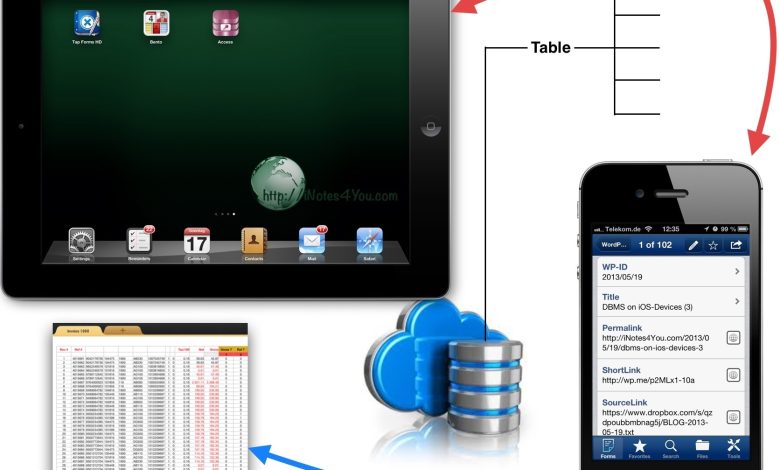Advanced Database Management Techniques for Mobile Apps

Mobile applications in 2025 are no longer just about slick user interfaces and fast performance. They rely heavily on data—from storing user preferences to managing large datasets, offline caching, and synchronizing with cloud servers.
Choosing the right database management strategy can make the difference between an app that runs seamlessly and one that lags, crashes, or drains resources. With billions of users expecting apps to work instantly—online or offline—developers need to master advanced database management techniques to deliver top-notch experiences.
This article dives into modern strategies, frameworks, and best practices for managing databases in mobile apps.
Why Database Management is Crucial in Mobile Apps
- Offline Support: Many apps need to function with limited or no internet connectivity.
- Performance: Efficient queries reduce app lag and improve UX.
- Scalability: Apps must handle growing datasets as user bases expand.
- Data Security: Protecting sensitive user information is essential.
- Battery Efficiency: Optimized database operations reduce CPU usage and energy drain.
Popular Mobile Databases in 2025
1. SQLite
- Lightweight, file-based database.
- Built into both Android and iOS.
- Perfect for small to medium datasets.
2. Realm
- Modern mobile-first database.
- Fast, with live objects and reactive updates.
- Great for real-time apps and offline-first designs.
3. Room (Android Jetpack)
- Abstraction layer over SQLite.
- Provides compile-time query verification.
- Works seamlessly with Kotlin Coroutines and Flow.
4. Core Data (iOS)
- Apple’s official ORM-style framework.
- Supports object graph management.
- Integrated deeply with iOS ecosystem.
5. Firebase Realtime Database & Firestore
- Cloud-hosted NoSQL databases.
- Real-time synchronization across devices.
- Ideal for apps requiring instant updates.
6. MongoDB Realm & Couchbase Mobile
- NoSQL databases supporting offline-first architectures.
- Synchronization with cloud clusters.
Advanced Database Techniques
1. Offline-First Architecture
Offline-first design ensures apps remain functional without constant internet access.
- Use local caching to store user actions.
- Sync data to the server once connectivity resumes.
- Example: WhatsApp queues messages offline and delivers them when connected.
2. Data Synchronization Strategies
- Two-Way Sync: Local and remote databases update each other.
- Conflict Resolution: Handle conflicts with strategies like last-write-wins or merge rules.
- Change Tracking: Track modified rows with timestamps or versioning.
3. Efficient Querying
- Use indexed queries for faster lookups.
- Avoid unnecessary SELECT * queries—fetch only needed fields.
- For complex datasets, denormalize selectively to reduce JOIN operations.
4. Database Encryption
- Encrypt data at rest and in transit.
- Use SQLCipher for SQLite encryption.
- Leverage Keychain (iOS) or Keystore (Android) for credential storage.
5. Optimizing Storage & Memory
- Compress large objects before storage.
- Store images/videos in external storage or cloud, not directly in the database.
- Use BLOBs sparingly.
6. Using Object-Relational Mapping (ORM) Tools
- Android → Room, GreenDAO, ORMlite
- iOS → Core Data, GRDB
- ORMs reduce boilerplate, enforce consistency, and simplify migrations.
7. Partitioning and Sharding (for Enterprise Apps)
- Split data into logical partitions to improve query performance.
- Shard large datasets across devices or servers for scalability.
Case Study: Offline Banking App
A fintech company needed an app that could handle transactions offline in rural areas.
Challenges:
- Intermittent connectivity
- Sensitive financial data
- Need for real-time sync once online
Solutions:
- Used Realm for local data persistence.
- Implemented two-way sync with conflict resolution rules.
- Encrypted all records with SQLCipher.
Result:
- 40% reduction in sync failures
- Seamless offline experience for users
- Increased adoption in remote areas
Tools for Database Performance Monitoring
- Android Profiler (Room, SQLite)
- Xcode Instruments (Core Data)
- Realm Studio
- Firebase Performance Monitoring
- New Relic Mobile APM
Best Practices for Mobile Database Management
✅ Choose the right database (SQLite, Realm, Firebase, etc.) based on app needs.
✅ Always implement offline-first strategies for better UX.
✅ Optimize queries and use indexes for speed.
✅ Secure data with encryption at rest and in transit.
✅ Test apps on low-end devices with limited memory.
✅ Plan migrations carefully to avoid data loss after updates.
The Future of Mobile Databases
By 2025, mobile databases are moving toward:
- Edge computing: Processing data locally for real-time responsiveness.
- AI-powered indexing: Predictive queries for faster lookups.
- Seamless cloud sync: Stronger integration with multi-cloud backends.
- Serverless models: Databases like Firebase and Supabase eliminating backend setup.
Conclusion
Database management is the backbone of mobile app development. While flashy features may attract downloads, only apps with robust, efficient, and secure data handling retain users over time.
By mastering advanced techniques—like offline-first design, synchronization, efficient querying, and encryption—you’ll ensure your apps are not only fast but also reliable and scalable.
In 2025, successful mobile apps are the ones that handle data smartly, securely, and seamlessly.

